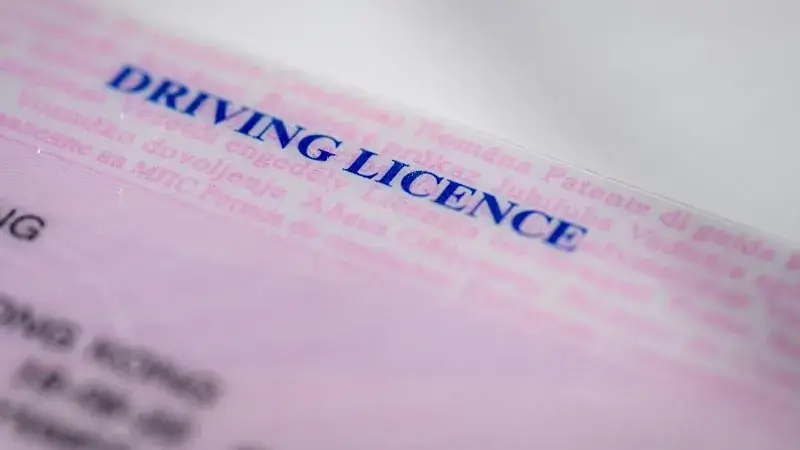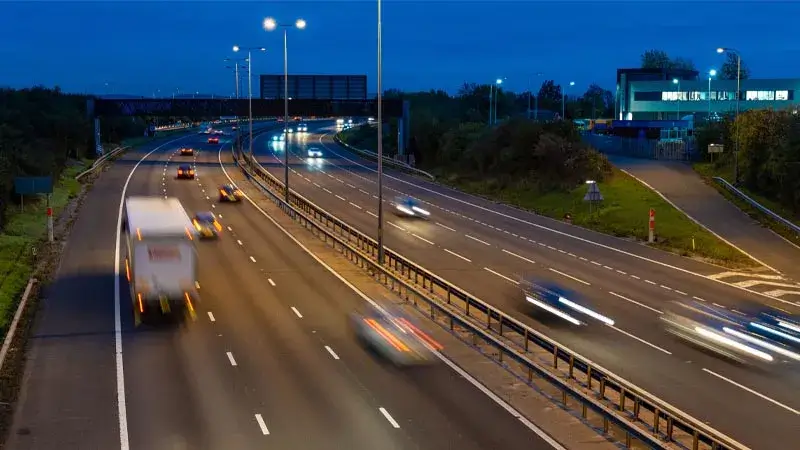In today’s ever-evolving landscape of driver licence checks, staying up-to-date with crucial updates and understanding associated risks is paramount.
This article delves into the intricate world of licence checks, providing an analytical and thorough overview of the frequency, process, and responsibilities involved.
By exploring restriction codes, reporting convictions, and implementing a risk-based approach, organisations can ensure compliance and minimise potential pitfalls.
Join us as we unravel the complexities of driver licence checks, empowering you to navigate this crucial aspect of transportation operations.
Key Takeaways
- DVSA expects quarterly licence checks and a risk-based approach to be implemented
- Conduct digital driver licence checks and retain evidence of the checks
- Assign an administration department to acquire check codes and print PDF checks
- Understand restriction codes and their impact on a driver’s eligibility to drive
Frequency and Process of Licence Checks
The frequency and process of driver licence checks must be consistently maintained to ensure compliance with DVSA regulations. According to the DVSA, quarterly licence checks are expected, which means checks should be conducted every three months.
To implement a risk-based approach, high-risk drivers should be classified based on points, driving experience, and licence history. It is crucial to publish the licence check process and risk-based criteria to all staff to ensure transparency.
To carry out licence checks, digital checks should be conducted as old paper licences do not provide key information. The GOV.uk website or a bureau service can be utilised for this purpose. It is important to retain evidence of licence checks and follow GDPR processes for data storage.
The responsibility for licence checks should be assigned to an administration department, and those checking the licences should have a clear understanding of the information and necessary changes. Any restriction codes on licences should not be ignored as they can drastically impact a driver’s eligibility to drive.
Reporting convictions and endorsements is crucial, and the Traffic Commissioner Statutory Document 6 should be referred to for the requirements of reporting. Regularly checking licences and instructing drivers to notify in writing any driving offences immediately is important.
Carrying Out and Storing Licence Checks
To efficiently carry out and store licence checks, it is recommended to conduct digital driver licence checks and retain evidence of these checks.
Old paper licences do not provide key information, so it is important to use the GOV.uk website or bureau service for digital checks. By conducting digital checks, you can ensure that you have accurate and up-to-date information about the driver’s licence status.
Additionally, retaining evidence of these checks is crucial for compliance and record-keeping purposes. It is important to follow GDPR processes for data storage to protect the privacy of the drivers.
Responsibility for Licence Checks
An essential aspect of driver licence checks is assigning the responsible administration department for acquiring check codes and printing PDF checks. This ensures that the process is carried out efficiently and accurately.
The responsibility for licence checks should not be taken lightly, as it directly impacts the safety and freedom of individuals on the road. To emphasise the importance of this responsibility, consider the following:
- A single oversight or negligence in the licence check process can put innocent lives at risk.
- The responsible department must be well-trained and knowledgeable to understand the information on the licences and any changes that may occur.
- Documenting the required checks and notifiable changes is crucial for maintaining transparency and accountability.
Given the freedom that comes with driving, it is imperative that the responsible department takes their role seriously and performs their duties diligently.
Understanding Restriction Codes
Continuing from the previous subtopic, it is vital to comprehend the significance of restriction codes in driver licence checks.
Restriction codes are an essential aspect of a driver’s eligibility to drive and can significantly impact their driving privileges. For example, Code 01 indicates that the driver requires eyesight correction while driving, while Code 78 prohibits the driver from operating vehicles with manual transmission. Additionally, Code 102 restricts the driver from driving drawbar trailers.
It is crucial for individuals conducting licence checks to be familiar with these codes and their implications. By understanding restriction codes, potential risks can be identified and appropriate actions can be taken to ensure compliance with the law.
For a comprehensive list of restriction codes, please check the Government website.
Reporting Convictions and Endorsements
The process of reporting convictions and endorsements is a crucial aspect of driver licence checks. It ensures that any driving offences committed by drivers are promptly and accurately recorded, allowing authorities and employers to make informed decisions regarding their eligibility to drive. Failing to report convictions and endorsements can have serious consequences, including fines, penalties, and potential loss of driving privileges.
Non-compliance with reporting requirements can lead to legal complications and hinder the freedom of drivers. Accurate reporting helps maintain the integrity of the licensing system and ensures that only qualified and responsible individuals are allowed on the roads. Prompt reporting allows for timely intervention and corrective measures, reducing the risk of accidents and promoting safer driving practices.
Therefore, it is essential for drivers and employers to understand and adhere to the reporting obligations outlined in the Traffic Commissioner Statutory Document 6, as well as any additional requirements imposed by regulatory bodies or organisations.
Implementing a Risk-based Approach
To ensure effective driver licence checks, it is imperative to implement a risk-based approach that considers various factors such as points, driving experience, and licence history. By analysing these factors, organisations can classify drivers into different risk categories, allowing them to allocate their resources efficiently and prioritise drivers who pose a higher risk. To illustrate the importance of a risk-based approach, consider the following table:
| Risk Category | Factors Considered | Actions Taken |
|---|---|---|
| High Risk | High number of points, limited driving experience, previous licence suspensions | Frequent licence checks, closer monitoring, additional training |
| Medium Risk | Moderate number of points, average driving experience, minor previous offences | Regular licence checks, periodic training |
| Low Risk | Clean driving record, extensive driving experience | Periodic licence checks, minimal monitoring |
This risk-based approach not only enhances road safety by focusing on high-risk drivers, but it also ensures that resources are allocated effectively, allowing drivers with clean records to enjoy their freedom without unnecessary scrutiny.
Importance of Regular Licence Checks
Regular licence checks play a vital role in ensuring driver compliance and road safety. They are essential for maintaining the integrity of the licensing system and preventing unqualified or unsafe drivers from operating vehicles.
Here are three reasons why regular licence checks are important:
- Accountability: Regular checks hold drivers accountable for their actions on the road, ensuring that they adhere to traffic laws and regulations. This helps maintain order and fairness on the roads, creating a safer environment for all users.
- Identification of risk: Licence checks allow authorities to identify high-risk drivers who may pose a danger to themselves and others. By monitoring driving records, points, and licence history, potential risks can be identified and appropriate actions taken to mitigate them.
- Compliance with regulations: Regular licence checks ensure that drivers are in compliance with legal requirements, such as eyesight correction, vehicle restrictions, or driving endorsements. This promotes a culture of responsibility and adherence to the rules, contributing to overall road safety.
Frequently Asked Questions
How Often Should Licence Checks Be Conducted?
Licence checks should be conducted quarterly, as per the DVSA’s expectations. A risk-based approach should be implemented, classifying high-risk drivers based on points, driving experience, and licence history. The process and risk-based criteria should be published and communicated to all staff.
It is important to conduct digital licence checks, as old paper licences may not provide key information. Evidence of licence checks should be retained, following GDPR processes for data storage.
Responsibility for licence checks should be assigned to an administration department, ensuring understanding of information and changes. Restriction codes on licences should never be ignored.
What Information Is Missing From Old Paper Licences That Makes Digital Checks Necessary?
Digital checks are necessary because old paper licences lack key information. These outdated licences do not provide details such as endorsement codes, which are crucial for determining a driver’s eligibility.
By conducting digital licence checks, using platforms like the GOV.uk website or bureau service, organisations can access the necessary information and ensure compliance with regulations.
This shift to digital methods allows for more accurate and efficient monitoring of drivers’ licence status, contributing to improved road safety and risk management.
Who Is Responsible for Acquiring Check Codes and Printing PDF Checks?
The responsibility for acquiring check codes and printing PDF checks lies with the administration department. They are responsible for obtaining the necessary check codes and generating the PDF checks for driver licence verification.
It is crucial that the administration department understands the information required for the checks and any changes in the process. They should also document the required checks and report any notifiable changes to the Transport Manager or Operator.
Ignoring restriction codes on licences should be avoided to ensure compliance with licensing regulations.
What Are Some Examples of Restriction Codes on Driving Licences and How Do They Affect Eligibility to Drive?
Restriction codes on driving licences can significantly impact a driver’s eligibility to operate certain vehicles. For instance, code 01 indicates a requirement for eyesight correction while driving, code 78 prohibits driving vehicles with manual transmission, and code 102 restricts the driving of drawbar trailers.
These codes are crucial as they outline specific limitations and conditions that drivers must adhere to. Understanding these restriction codes is essential for ensuring compliance with licensing regulations and promoting road safety.
What Is the Process for Reporting Driving Convictions and Endorsements to the Relevant Authorities?
The process for reporting driving convictions and endorsements to the relevant authorities involves checking licences frequently to identify any endorsements or convictions within 28 days.
Drivers should be instructed to notify in writing any driving offences immediately, and they should sign an annual declaration acknowledging this requirement.
The Traffic Commissioner Statutory Document 6 outlines the specific requirements for reporting.
Following these guidelines and using a template version can help facilitate the reporting process and ensure compliance with reporting obligations.
Round Up
Conducting regular and effective driver licence checks is crucial in maintaining safety standards within transportation operations. By understanding restriction codes, reporting convictions and endorsements promptly, and implementing a risk-based approach, organisations can streamline the licence check process and minimise potential risks.
It is essential for all staff members involved in licence checks to stay informed about the process and any changes in criteria. By adhering to the guidelines outlined in this article, organisations can ensure they are up to date with the latest updates and mitigate potential risks associated with driver licence checks.
As the saying goes, ‘Safety first, always.’
Share This Article, Choose Your Platform!
continue reading
Related Posts
Discover how Driver CPC Training can unlock your potential as a commercial driver. Don't miss out on the key to driving success!
In the vast world of transportation, drivers must navigate a complex web of regulations to ensure their compliance and safety.





